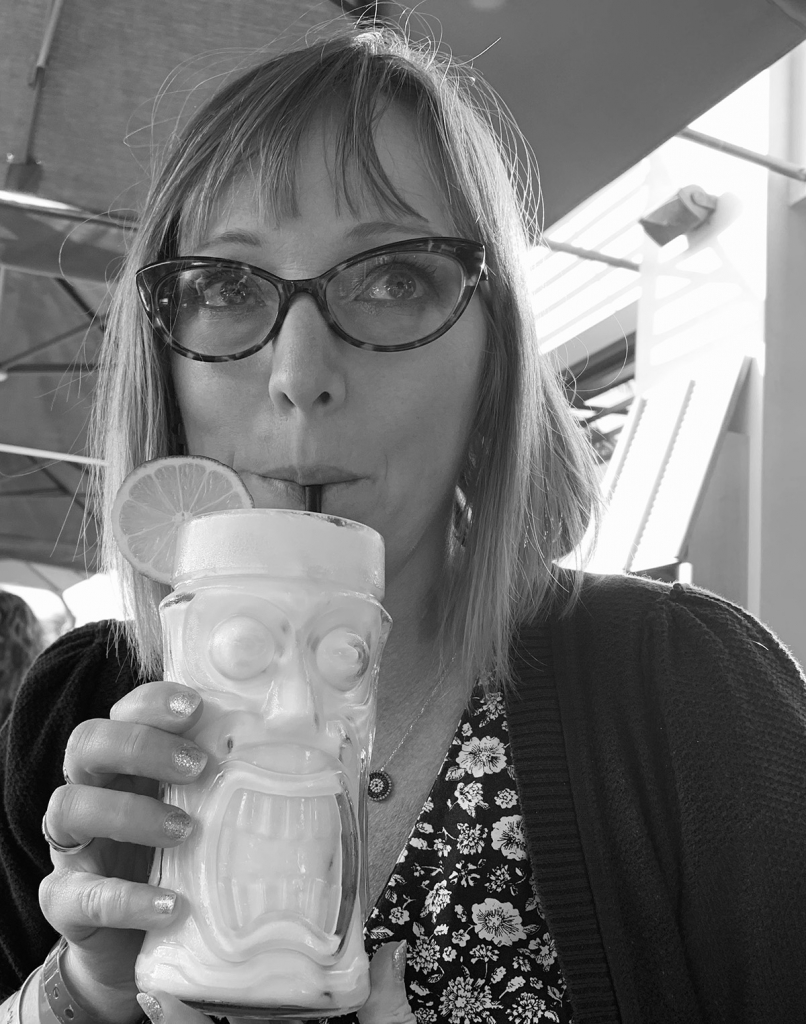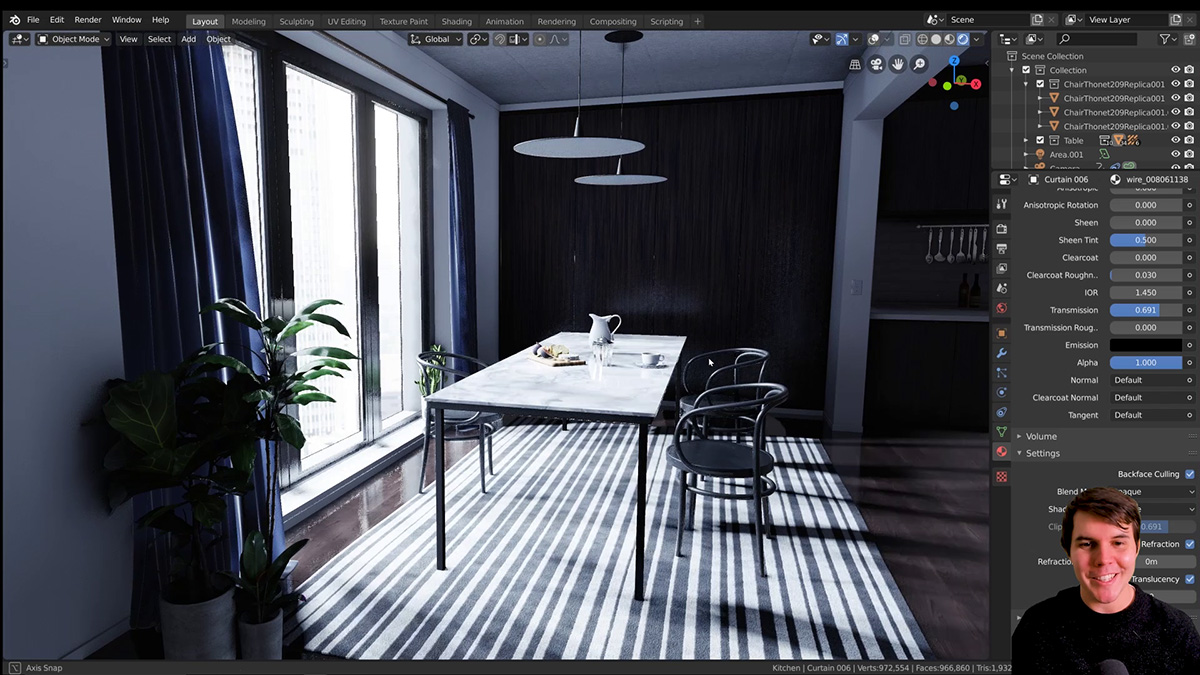‘These are my shoulda…woulda…coulda…lessons.’

All this week we’ve been featuring 3D artists as part of #3dartistsrock week. And, not unexpectedly, these have so far been of the CG kind. But one artist still working in ‘3D’, just of the paper variety, is Megan Brain, a paper sculptor whose work has been seen in a number of music videos, commercials and in Kubo and the Two Strings.
I’ve seen Megan talk and show her skills in front of a crowd of artists, and every single person is always amazed what she can do with paper. The tangible side of her art is of course appealing to many, so I thought I would ask Megan about the craft of paper sculpture and how she got into it, what the toughest part of the craft is, and where people can see her latest work.

b&a: What would you say was the driving force behind you becoming interested in paper sculpture?
Megan Brain: I was taking a Bauhaus based design and color art course and my instructor was an accomplished paper sculptor named Leo Monahan. I saw some of his work and became very interested trying the medium out for myself. Once I started making a few images in paper, my imagination went wild with ideas. It reawakened my creativity that had really taken a dive after having graduated from art college.
b&a: When I see you talk about your craft, I can see people in the audience getting immediately excited about being able to ‘hold’ something and do something very practically – what do you think it is about paper sculpture that makes people feel that way?
Megan Brain: I guess it might be because seeing tangible art is more of novelty these days? Most of the artwork we look at is seen on our computers via the internet, or the art has been created with digital tools. When people see my work in person they often react to the small scale and the details. Most of my work is in the bas-relief style which is basically 3 dimensional cut out drawings. There is an orchestrated side that is meant for the viewer, and an ugly side with the construction. I believe people get a kick out of seeing the pieces in person and flipping them over to see how they are engendered.

b&a: What are some of the ‘tough’ things about sculpting with paper, especially in terms of design, actual mechanics, ‘breakages’, and, in animation, getting paper to do what you want it to do?
Megan Brain: For the most part I don’t have a ‘tough’ time with paper because it’s fairly easy to replace mistakes or broken bits. However, your question reminds me of one project that both challenged and taught me important lessons. We ran into complications with pieces falling and breakages due to reconstruction. Years ago I was commissioned to create two very large paper compositions. They had to be created in US, shipped and assembled in one day in Canada, and then shipped out to Europe for installation. It was one of those projects that taught me about the challenges of ‘working large’. These are my shoulda…woulda…coulda…lessons:
1. The first difficulty was trying to compose large. I had to build the whole piece on my home studio floor. I was constantly getting on ladders and looking down to see what the composition was looking like, and trying to get a correct perspective on the piece. The good thing is paper is easy to shuffle around and play with. My phone camera helped me refer to the piece and see it more objectively and make adjustments.
2. My background was so large that it had to be broken into 4 pieces for shipping purposes. It had 4 ugly seams that really bothered me, but I didn’t have a good solution to resolve it…at that time.

3. I should have clarified the details of the workspace in Canada and how much time they were scheduling for me to glue down the pieces. It was a difficult assembly in the middle of a picture framing operation. It was awkward to reach my piece on this table, and a dirty dusty environment. The challenge was setting pieces down in correct positions and keeping the white paper free from dirt. The glue needed much more time to dry and cure so that was the reason pieces dropped later.
4. The piece was created all in white paper but the depth of the box frame was shallow. When you apply white sculpture pieces on top of a white background, you need a lot of depth to be created so the natural shadows help define the pieces. Having a piece in all white paper with natural lighting gives a beautiful effect, but it has to be thoughtfully assembled or lit with intention. When the pieces are colored I can control the eye of the viewer and visibility and composition. A great solution for this specific problem came later by the art director of the project. He suggested we take all the white sculptures off and reapply them on top of a roll of beautiful blue canvas. This solution also resolved the issue of the ugly seams! The piece was greatly improved and is still holding up today.
Ultimately I don’t at all blame the company that hired me. The onus and responsibility was on me as the ‘paper sculpture expert’ to predict these needs and complications. If the opportunity rises again, I’m better prepared! They ended up happy with the project which is a relief.
b&a: Can you outline what your involvement on Kubo was and how you explored the mechanics of the origami characters in particular?
Megan Brain: Myself and artist Mari Tobita were tasked with exploring and creating 3 dimensional paper characters for the film. Our approved paper models would be taken to the puppet fabrication department and created in sturdy materials. Some even had custom armatures made so they could be animated puppets in the film.
We divided the work of the origami creations Kubo was creating in the film. I worked on the tiger, elephant, chicken, snake, deer, and shark. Mari created a troll, spider, dragon, and a weasel. We worked off the character designs Shannon Tindle and Jesse Aclin created. The goal was to interpret those 2D drawings into completely 3 dimensional ‘origami’ looking characters.

Technically the definition of the origami technique is to fold and create forms using one piece of paper. The technique I used is considered ‘Kirigami’. That is the Japanese art form of cutting and folding paper. I used that approach to create characters based off designs we were given. Mari, however, had a good understanding of origami paper engineering, and applied origami techniques to her characters with remarkable results.
I was also tasked with creating a character in the second act call ‘Hanzo Origami’ and created some of the main characters in the film that were potentially going to show up in a dream sequence in paper form. During this time on Kubo I learned to use techniques and tools used in clothing design. I started with very rough paper pieces and created patterns that could be taken off of the armature, adjusted, and reworked until I was happy with the results. That final pattern was transferred onto ‘good’ paper using a ‘tracing wheel’ tool, and the final puppet was created.
b&a: What are some of your other recent projects that have involved paper sculpture work?
Megan Brain: In the past year I helped the Walt Disney Imagineering Parade division come up with ideas for a float to be used in Tokyo Disneyland, and I also got to create a comedy album cover for ‘Neil Hamburger’. As for personal projects, I’m having fun creating caricatures of favorite film directors, and I have some ideas for Halloween themed pieces.

I’ve also been putting a lot of focus and time into creating keynote lectures that go over my background and exploration in paper sculpture. So far I’ve presented in China at an art university, Mexico for ‘Pixelatl’, Italy for VIEW Conference, and most recently in Ireland and Denmark for ‘Schoolism Live’. In September I will be speaking in Malta at Trojan Horse Was a Unicorn.
I’m also beefing up on my knowledge of the Johannes Itten ‘color and design’ course created at Bauhaus school in Germany in the 1920’s and 30’s. The school was shut down because of WWII but the curriculum lived on and spread all over the world. Those artists from the original school had a major impact on modern art and design as we know it. They birthed the mid-century modern era and aesthetic. This basic ‘color and design’ course that I took from a 3rd generation Bauhaus trained teacher Leo Monahan, was THE most helpful, informative, useful art class I’ve ever taken. I would love to share this information with others because it’s so broadly useful in every visual discipline.
b&a: You’ll also be at Lightbox Expo this year, what will you be showing?
Megan Brain: For the first time I will have a table at an expo so I’m currently figuring out what that will look like and picking the brains of artist friends who have been to many of these in the past. I plan on having some old and new original art on view. I might sell some fun images printed up on magnets and also create some limited edition prints. I’m scheduled to do a demo on September 8th, 10am-11:30am. I’ll have a plan and can create a fairly intricate piece in 90 minutes. I’m very excited because this Lightbox group has assembled an impressive list of artists. The main organizers of this event, Bobby Chui and his wife Kei Acedera, are both exceptional artists with great taste and have befriended many nice and talented artists.
Find out more about Megan’s paper creations at her website.

This week at befores & afters is #3dartistsrock week, diving deep into a different 3D artist each day to reveal their work and their process.




























